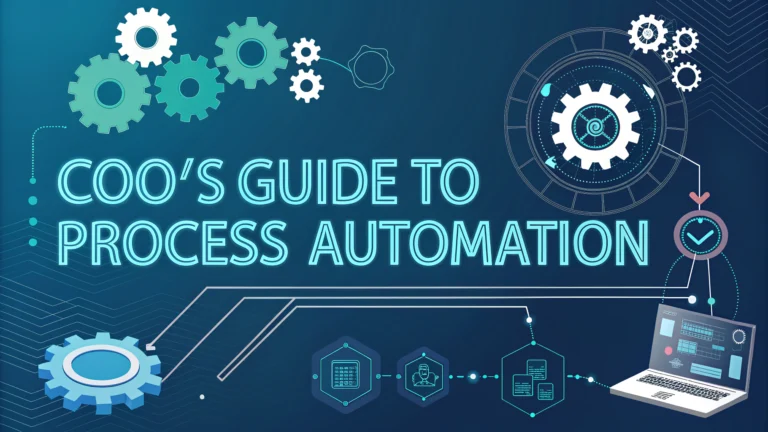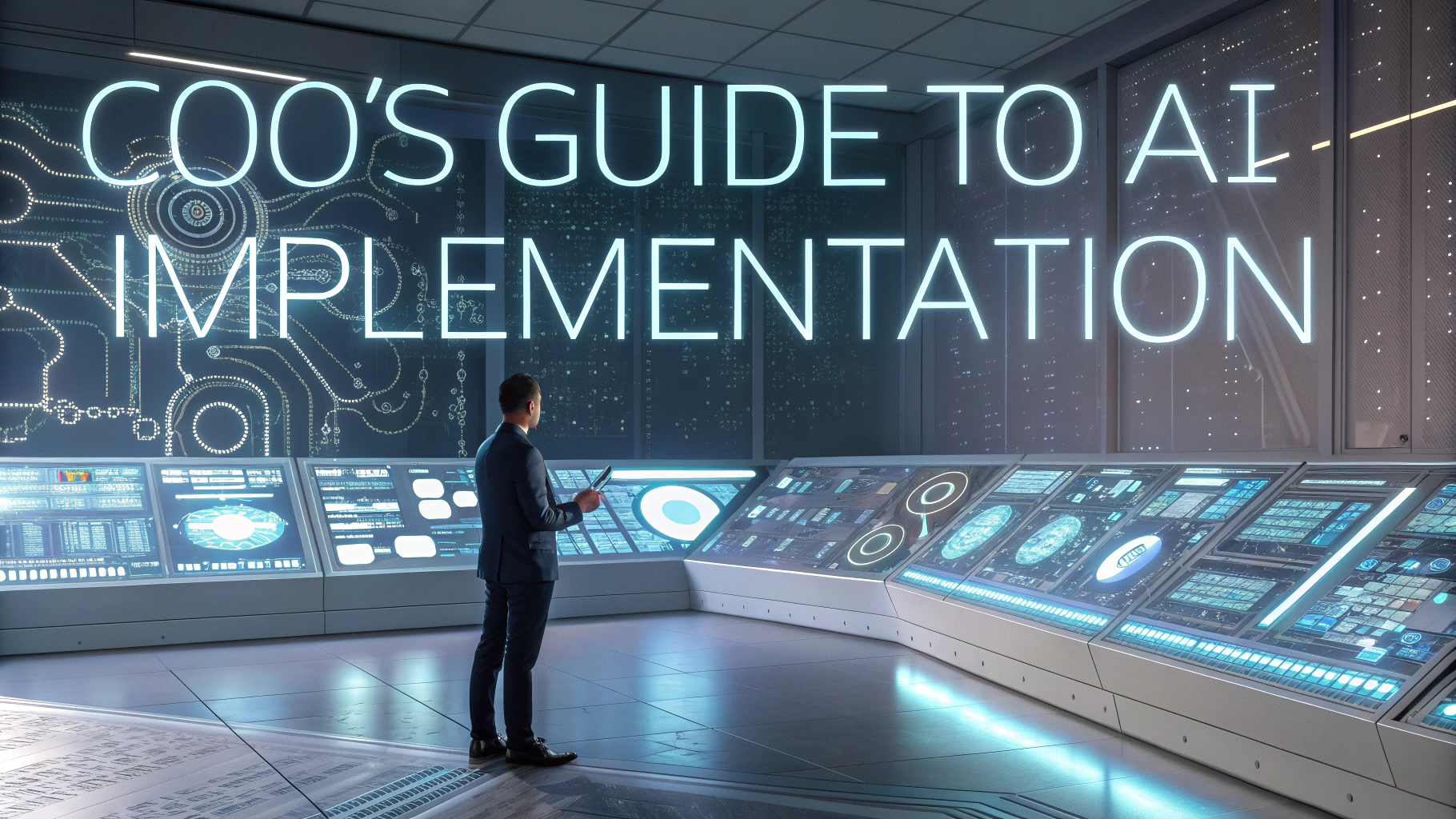Process automation transforms how organizations operate by streamlining workflows, reducing manual tasks, and improving efficiency across departments.
As a COO, your role in leading automation initiatives directly impacts operational excellence, cost reduction, and competitive advantage.
This guide walks you through the essential steps of implementing process automation while avoiding common pitfalls that can derail your automation efforts.
Identifying Automation Opportunities
- Repetitive manual tasks
- Data entry and validation processes
- Document routing and approvals
- Customer service responses
- Inventory management
- Report generation
Key Technologies for Process Automation
Robotic Process Automation (RPA) tools like UiPath, Automation Anywhere, and Blue Prism excel at automating rule-based tasks.
Business Process Management (BPM) platforms such as Pegasystems and Appian help orchestrate complex workflows.
Artificial Intelligence and Machine Learning solutions enhance automation capabilities through natural language processing and pattern recognition.
Implementation Strategy
- Start with process mapping and documentation
- Select appropriate automation tools
- Run pilot programs
- Measure results
- Scale successful implementations
ROI Calculation Framework
| Metric | Calculation Method |
|---|---|
| Time Savings | Hours saved per task × hourly rate × frequency |
| Error Reduction | Cost per error × reduction in error rate |
| Productivity Gains | Additional output × value per unit |
Change Management Tips
Create a clear communication plan to address employee concerns about automation.
Invest in training programs to help staff adapt to new automated processes.
Establish metrics to track adoption rates and system effectiveness.
Common Automation Pitfalls
- Automating broken processes
- Inadequate testing
- Poor documentation
- Lack of employee buy-in
- Insufficient maintenance planning
Success Metrics
- Process completion time
- Error rates
- Cost per transaction
- Employee satisfaction
- Customer satisfaction
- Return on investment
Next Steps for Your Automation Journey
Begin by conducting a process audit to identify your top automation candidates.
Schedule demonstrations with leading automation vendors (UiPath, Automation Anywhere) to understand their capabilities.
Connect with other COOs through professional networks like LinkedIn or industry associations to learn from their automation experiences.
Governance and Compliance
Establish clear governance frameworks to maintain control over automated processes and ensure compliance with regulations.
- Create automation policies and guidelines
- Define roles and responsibilities
- Implement audit trails
- Monitor regulatory requirements
- Regular compliance reviews
Scaling Automation Enterprise-Wide
Building a Center of Excellence
Develop a dedicated team to oversee automation initiatives, standardize practices, and share knowledge across departments.
Infrastructure Requirements
- Cloud computing resources
- Security protocols
- Integration capabilities
- Backup systems
- Monitoring tools
Future-Proofing Your Automation Strategy
Stay ahead of technological advancements by incorporating emerging technologies:
- Intelligent Document Processing (IDP)
- Natural Language Processing (NLP)
- Advanced Analytics
- Low-Code/No-Code Platforms
- Edge Computing Integration
Driving Long-Term Automation Success
Focus on continuous improvement and adaptation to maximize the value of your automation investments. Regular assessment of automated processes ensures alignment with business objectives and identifies new optimization opportunities.
Remember that successful automation is an ongoing journey rather than a destination. Stay committed to evolving your automation strategy as technology advances and business needs change.
Take the first step today by identifying your organization’s most promising automation opportunities and building a roadmap for transformation.
FAQs
- What is the primary role of a COO in process automation initiatives?
The COO is responsible for overseeing the strategic implementation of process automation, aligning automation initiatives with business objectives, ensuring operational efficiency, and managing the organizational change that comes with automation. - How does process automation impact operational costs?
Process automation typically reduces operational costs by 20-40% through decreased manual labor, reduced error rates, faster processing times, and improved resource allocation. - What are the key metrics COOs should track when implementing process automation?
Key metrics include ROI, process cycle time, error reduction rates, employee productivity, customer satisfaction scores, cost per transaction, and system uptime/reliability. - Which business processes should be prioritized for automation?
Prioritize processes that are repetitive, rule-based, high-volume, error-prone, or time-consuming, such as data entry, invoice processing, report generation, and customer service inquiries. - What role does RPA (Robotic Process Automation) play in a COO’s automation strategy?
RPA serves as a fundamental tool for automating routine tasks, enabling software robots to mimic human actions in existing systems without requiring significant IT infrastructure changes. - How should COOs address employee concerns about automation?
COOs should develop clear communication strategies, provide reskilling opportunities, emphasize job transformation rather than elimination, and involve employees in the automation process to ensure buy-in. - What are the common challenges in implementing process automation?
Common challenges include resistance to change, legacy system integration, data security concerns, selecting the right processes for automation, and maintaining process quality during transition. - How can COOs ensure successful change management during automation implementation?
Success requires creating a clear vision, establishing a dedicated change management team, developing comprehensive training programs, setting realistic timelines, and maintaining regular stakeholder communication. - What security considerations should COOs prioritize in process automation?
Priority security considerations include data encryption, access controls, audit trails, compliance with industry regulations, regular security assessments, and incident response planning. - How do COOs measure the success of automation initiatives?
Success is measured through quantitative metrics like cost savings, processing time improvements, and error reduction rates, as well as qualitative factors such as employee satisfaction and customer experience improvements.







